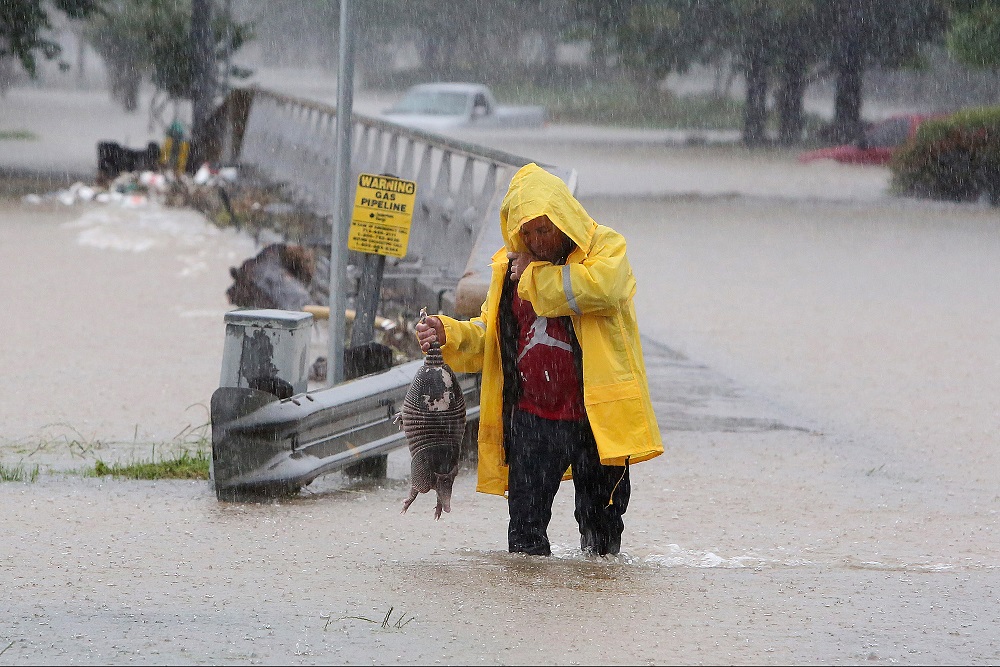A constant upsurge in rainfall, overflowing rivers, and frequent landslides have led to a horrific catastrophe in major regions of India. The news that the water level had risen above the danger point created a stir in the minds of the people.
However, during the flood and its aftermath, there are also threats to one’s health and safety. The floodwater is generally contaminated by various pollutants like sewage, human and animal feces, pesticides and insecticides, fertilizers, oil, asbestos, rusting building materials, and so forth.
Indeed, many lives were claimed by the infectious diseases broken out during and after the flood. The following are the common health risks and hazards associated with floods.
1. Contaminated Water
After the flood, the contaminated flood water can pose a threat for months to come. The floodwater is full of chemical spills, biotoxins, invasive species, waste, sewage, and debris.
Due to contaminants, there are chances of waterborne illness and life-threatening infectious diseases. If the sanitary/sewage disposal system or wastewater treatment plants overflooded, can cause infection.
The groundwater gets contaminated with the fecal waste of humans and animals. As a result, there could be an outbreak of balantidiasis, an intestinal protozoan.
If a person drinks/uses unclean water, it may lead to
- Cholera epidemic
- Typhoid
- Dysentery
- Diarrhea
- Also, the infection of the eye, skin, ear, and nose may occur.
It is likely that environmental changes increased the vector (rodent) population which facilitated transmission. The health risks are high when we drink contaminated water.
2. Unsafe Food
The floodwater carries away everything on the ground and upstream. The packed food, refrigerated, or stored food, gets affected by the flood situation. The reason is the power cut for a longer period.
The mold contamination chances are very high to bakery products, paper packaged food items. The cardboard juice/milk/baby formula boxes and home-canned foods get highly deteriorated when comen in contact with floodwater.
The outbreak due to unsafe food includes E. coli, Cyclospora, Giardia, Campylobacter, and Hepatitis A. These may have long-term complications or may be fatal.
The contamination makes food unsafe to eat and poses fatal health risks.
3. Animal remains
It is also suggested to avoid contact with wild animals, rats, and rodents that possibly carry viruses and diseases, and to get rid of dead animals. Certain pathogens that may be transmitted from farm animals, including Salmonella and E. coli.
Contact with wildlife may also increase the potential for rabies. Anthrax contaminated animals are more dangerous if comes in contact. The spores from the bacteria have a long lifespan and have been known to remain around the dead animal’s burial site for decades.
Tularemia is another bacterial disease that can be spread through dead animals. Some people will remain unaffected by this bacteria, while others will become very sick or die. You may have a high fever, pink eye, headaches, stomach pain, intestinal distress, chest pains, cough, sore throat, and swollen glands.
Spreading the risk of other diseases like Lyme disease, typhus, scabies, lice, and leptospirosis could be possible.
4. Mosquitoes and Malaria
Flooding may initially flush out mosquito breeding, but it comes back when the waters recede. The lag time is usually around 6-8 weeks before the onset of a malaria epidemic.
A study has observed that extreme flooding may result in an increase of approximately 30% in the risk of positive malaria diagnosis after floods.
Dengue is one of the most dangerous diseases that may affect humans.
5. Leakages of poisonous material and gas
A very common problem on farms in disasters is hazardous materials spills. Storing hazardous materials in locked buildings with securely strapped containers should prevent these from leaking into the environment and water supply.
In the event of power outages following floods, the flood victims tend to use alternative sources of fuels or electricity for heating, cooling, or cooking inside enclosed or partly enclosed houses, garages or buildings without an adequate level of air ventilation. It may lead to carbon monoxide poisoning.
6. Exposer to Molds
Molds may cause long-term health risks after the flood. Infants, children, immune-compromised patients, pregnant women, individuals with existing respiratory conditions (allergies, multiple chemical sensitivity, and asthma) and the elderly appear to be at higher risks for adverse health effects from mold.
Symptoms include nose and throat irritation, wheezing, coughing, asthma attacks in individuals who have asthma, and lower respiratory tract infections (in children).
7. Other Health Risks
- Electric current is dangerous
- Sharp Objects carried away with floodwater may cause a serious cut
- Drowning or injuries of trauma
- Hypothermia in children if exposed for longer periods.
8. Mental Stress and Fatigue
People can experience a wide range of emotions before and after a disaster or traumatic event. Flooding can pose substantial social and mental health problems that may continue over extended periods of time.
It affects people’s health, relationships, and welfare. There could be significant increases in depression, anxiety, and psychological distress among the victims.
Hence, it is very much necessary to find healthy ways to cope with flood-like disasters (1). Even 6 inches of fast-moving flood water can knock you off your feet, and a depth of 2 feet will float your car! Yes…the floods are really awful !!
